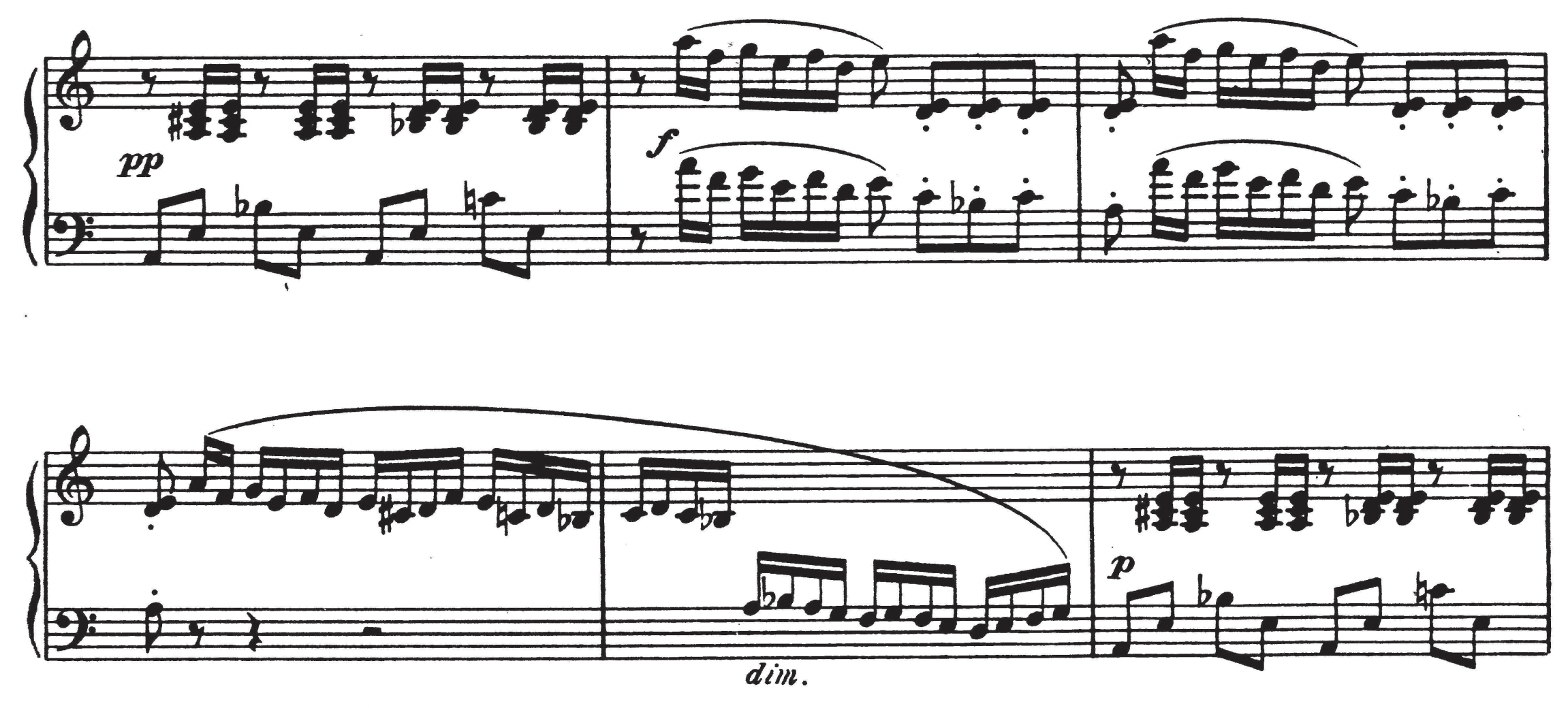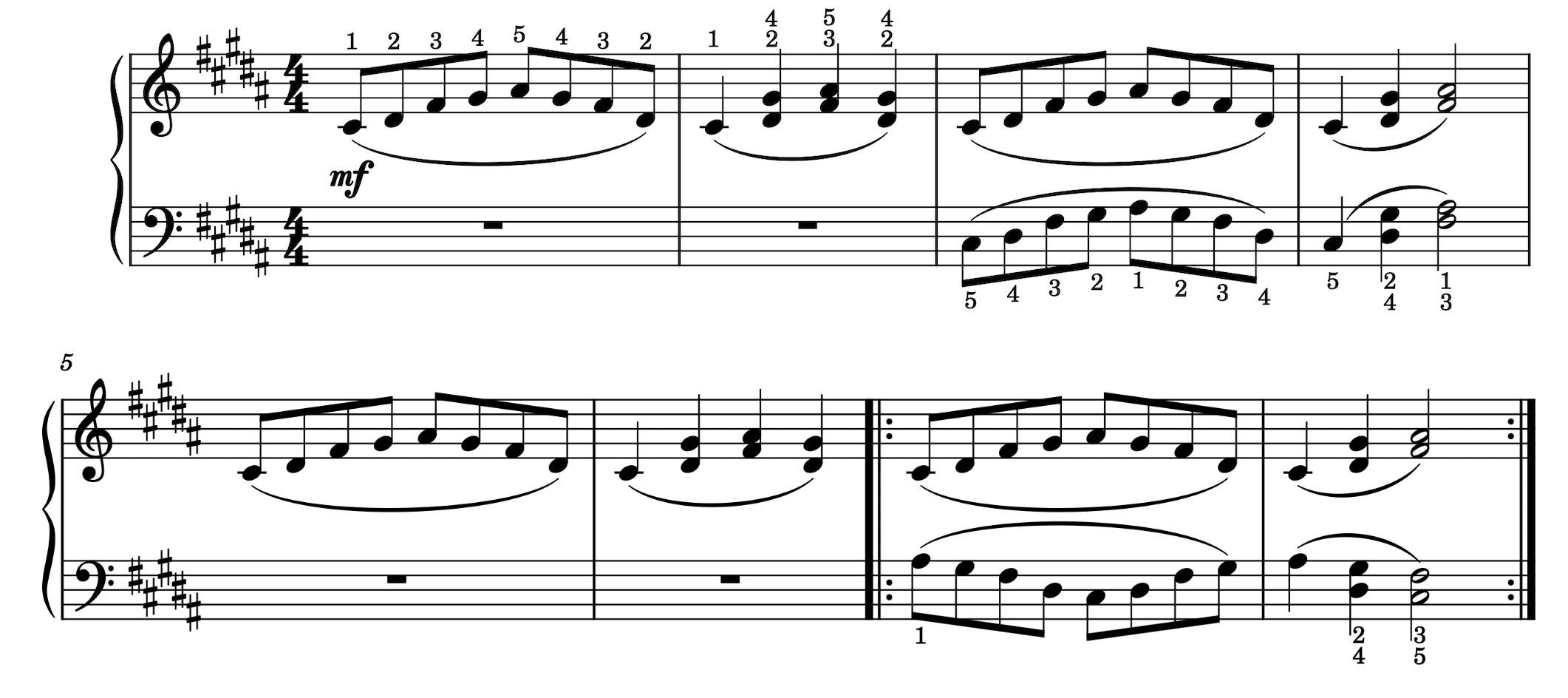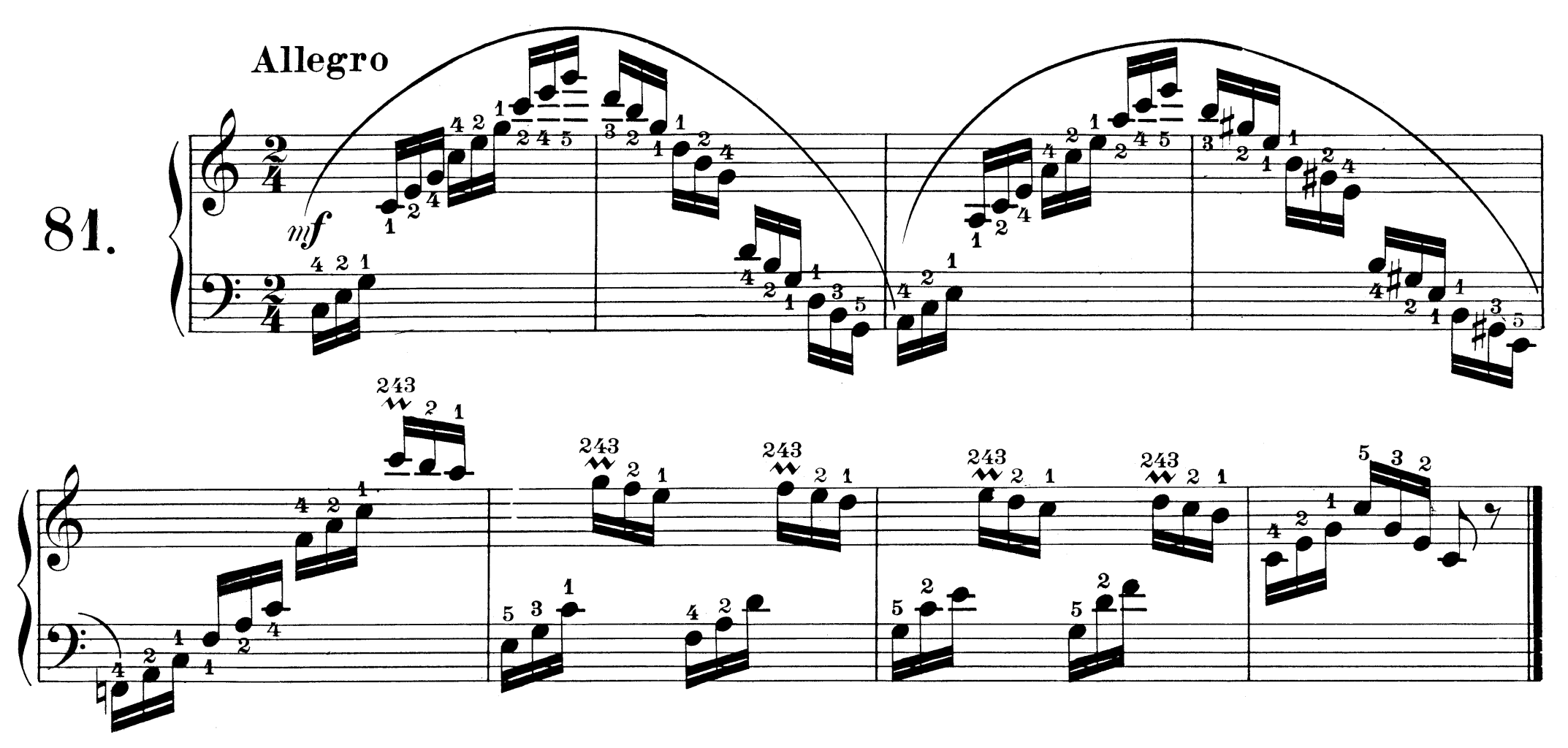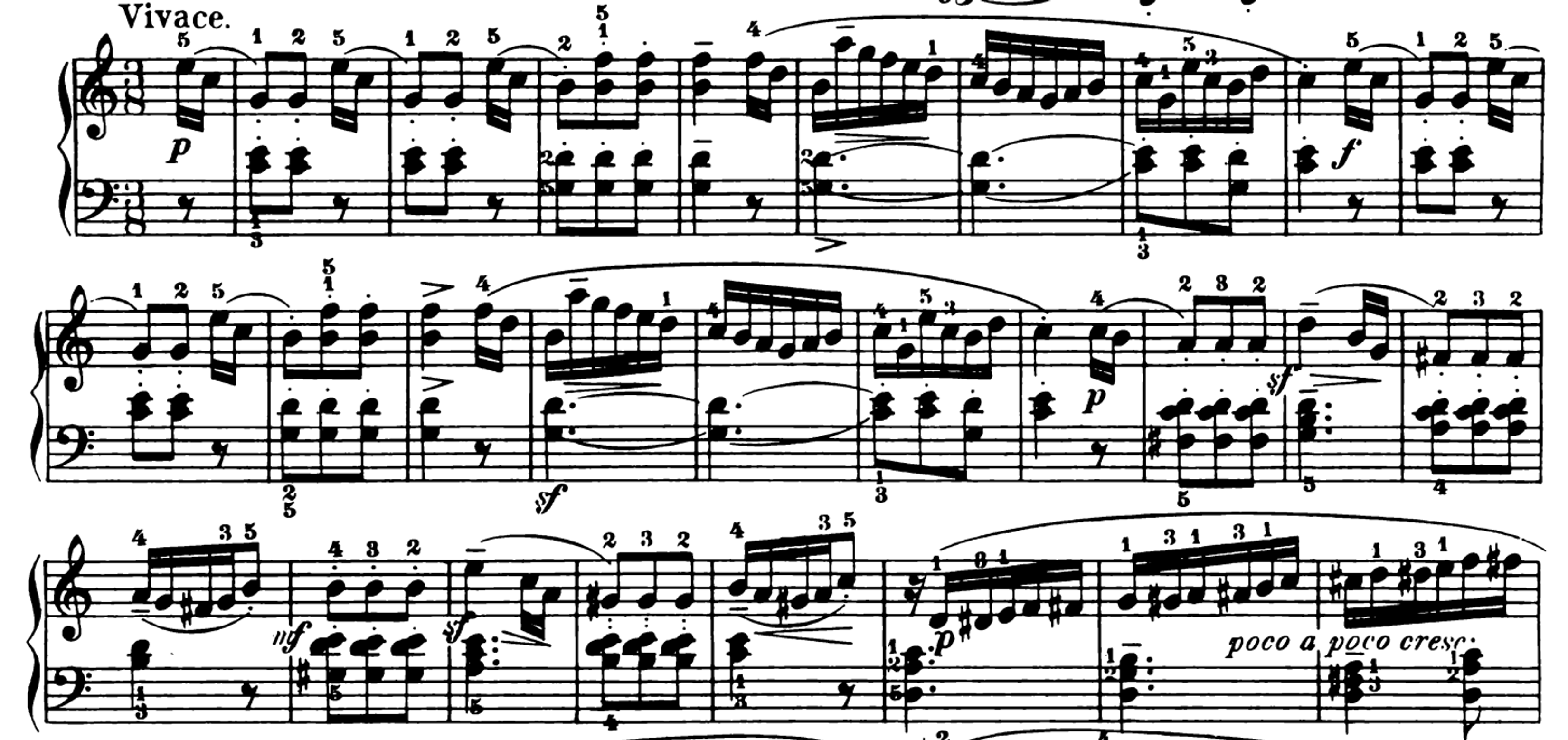- Home >
- Foundations in Piano Technique >
- The 3D Form >
- Applying Three-Dimensional Movement (1) (5.4)
The 3D Form
Applying Three-Dimensional Movement (1) (5.4)

Sacro-Monte, Op. 55 No. 5 by Joaquin Turina
- Practise the parallel passages using the techniques introduced in Hanon Exercises Nos. 1 & 5, both hands alone and together.
- Once again, note how the left and right hands and arms require different three-dimensional shaping when playing parallel passages.

Exertude No. 5 by Donald Waxman
- Practise Waxman’s Exertude No. 5 with your awareness of playing hands together passages in both parallel and contrary motion.

Etude in C, Op. 261 No. 81 by Carl Czerny
- Hand-over-hand arpeggios can be played early in a pianist’s studies, no matter what age at which study begins.
- Isolate small sections of this Etude (perhaps 7 notes at a time, in various overlapped groups) using good three-dimensional movement between the hands. Pause to evaluate all three-dimensional elements in small sections before expanding your practise groupings to 13 notes and, later, to playing the whole piece.

Sonatina in C, Op. 55 No. 1, 2nd movement by Kuhlau
- Practise the opening figures of this work with one gesture (a “macro-gesture")--so that the three notes of the arpeggios are played as the result of an integrated, whole-body motion, as opposed to isolated notes played only by the fingers.
- Note that the compound meter, ⅜, is felt as one beat per measure, not three.
- In mm. 17-24, isolate the eighth-notes as demonstrated in the video to combine a focused staccato attack with three-dimensional shaping and horizontal direction.
- In the same manner, experiment with isolating each of the separate left-hand voices in mm. 17, 19, 21, and 23 before returning to playing all of the notes at once.

Sonatina in C, Op. 36 No. 1, 3rd movement by Muzio Clementi
- Practise this work by using macro-gestures in each hand, simultaneously, feeling one beat per measure. Note how the hands tend to be in contrary motion, so the hands predominantly–though not exclusively–use “over and in" motions at the same time.
Purchase options
This content is available as a separate, once-off purchase from our store via the following products:
